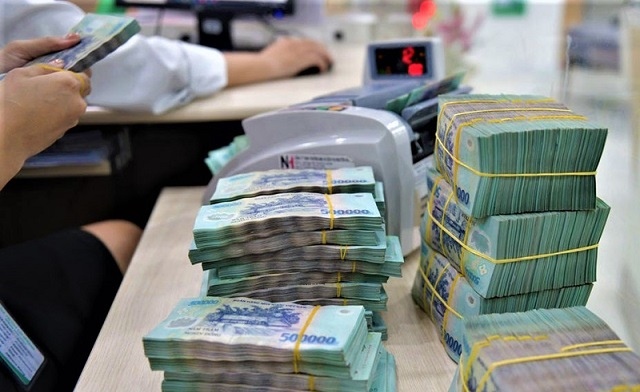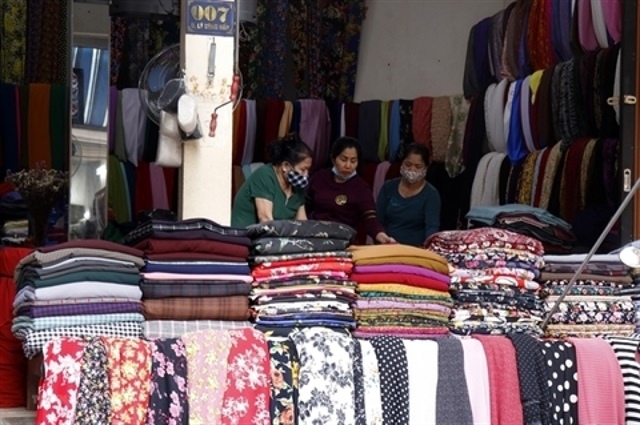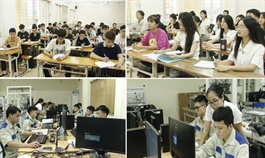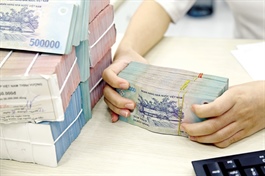S&P upgrades ratings of three banks, citing resilient economy
S&P upgrades ratings of three banks, citing resilient economy
The agency raised Vietcombank to BB+, Techcombank to BB and Eximbank to BB-, with stable outlooks, while upgrading Việt Nam’s BICRA to group 8 from 9.

Overall, the upgrades by the global credit rating firm signal greater confidence in Việt Nam’s financial system, underpinned by strong growth momentum and institutional reforms. — Photo baochinhphu.vn |
S&P Global Ratings has raised the long-term credit ratings of three major banks, reflecting the stronger resilience of the country’s financial system and continued above-average economic growth.
The agency lifted Vietcombank’s rating to BB+ from BB, Techcombank to BB from BB- and Eximbank to BB- from B+. Short-term issuer ratings remain at B, with all outlooks stable.
At the same time, Việt Nam’s Banking Industry Country Risk Assessment (BICRA) was upgraded to group eight from group nine.
S&P noted that Việt Nam’s economy is expected to expand by 5.9 per cent in 2025 and 6.0 per cent in 2026, outpacing the Asia-Pacific regional forecast of 4.1 per cent.
Growth is supported by strong inflows of foreign direct investment (FDI), a competitive and increasingly skilled workforce, and continued strength in the manufacturing sector. Electronics, mobile phones and textiles remain the leading export industries.
According to the report, Việt Nam’s macroeconomic stability and reliable logistics network for exports have enhanced its attractiveness to global firms.
Private consumption is also benefiting from better employment opportunities and rising wages. The recovery of tourism, along with accommodative monetary policy, is expected to further underpin growth.
S&P highlighted that Việt Nam’s banking sector remains primarily funded by customer deposits, with a domestic savings rate of 35–37 per cent of GDP over the past five years providing a stable buffer. Households account for nearly half of total deposits.
The State Bank of Vietnam has cut policy rates to 3 per cent from a peak of 4.5 per cent in 2023, helping to lower lending costs for borrowers.
Asset quality has also shown improvement.
The non-performing loan (NPL) ratio fell to 4.1 per cent in 2024, from 4.5 per cent in 2023. S&P attributed this to stronger loan growth, real estate recovery and interest rate cuts. New rules on collateral enforcement, due to take effect in October 2025, are expected to further support banks in resolving bad debts.
The ratings agency also noted that trade uncertainty, particularly tariff measures from the US, poses challenges. However, the current average tariff rate of 20 per cent is far lower than the 46 per cent announced earlier this year, limiting the direct impact on the banking sector. Loans to export industries account for only 3–5 per cent of total banking sector loans.
Việt Nam’s ratio of private-sector credit to GDP remains high, at about 136 per cent in 2024, which could increase credit risk in a downturn.
Transparency standards also lag behind regional peers, and a clear road map for Basel III adoption is still lacking. Nevertheless, recent reforms, including stricter oversight of related-party transactions and enhanced disclosure rules, are seen as steps towards improving governance.
S&P said supportive operating conditions will boost the resilience of the sector, with ongoing government backing for liquidity and stability if needed. It pointed to the swift intervention during the Saigon Commercial Bank crisis in 2022 as evidence of the authorities’ capacity to safeguard depositors’ confidence.
Overall, the upgrades by the global credit rating firm signal greater confidence in Việt Nam’s financial system, underpinned by strong growth momentum and institutional reforms, though risks from external trade and rapid credit expansion remain.
- 18:58 04/09/2025




























